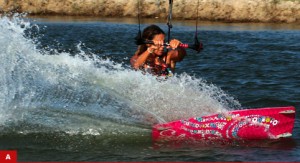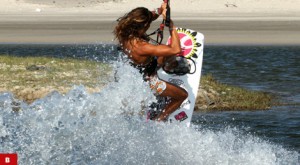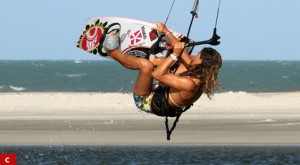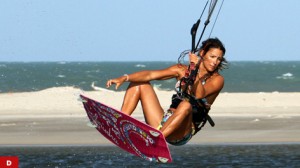Grabbed Popped Back Loop
GRABBED POPPED BACK LOOP
Whatever level you are in, specializing with the hooked in Grabbed Popped Back Loop technique is very satisfying. This technique will let you master on rotation control if you are really an aspiring popper. There is a lot to be said for carrying out the basics hooked in, comprehending with vital actions and opening both body and mind for some changes. You’ll be soaring up high on a variety of back loop based moves, both hooked and unhooked once you get use to this.
The Goal
If you want to fit in a bona fide grab, attaining a slow rotation is a must. So if you like hurling yourself frantically into a back loop, spinning with eyes shut while hanging around in the air and waiting for the board to land gracefully into the water surface, then this trick is undeniably for you. This can be also of help if you are discovering something like a back to blind.
Importantly, you’ll have to obtain your high elevation from your pop for you’ll not make use of the kite for the time being. So it indicates that the “exploding” rear leg should hurl you upright and high, in contrast of spinning you through the wind. This strap in well with the preceding point too.
Lastly, you’ll be glancing for a degree of inversion in your rotation. Executing a back flip is not a good idea, but if your board sets upright and you turn slightly back in your harness, then the grab will be much easier and modish. Furthermore, this too also strap in rather brightly with the preceding two points.
Highlights of the Trick
Pic A.
 The surfer is about to take off and this picture tackles all about the approach and thus the preparation. Even though this is a pop technique and you’ll not be setting the kite, but with a little bit of positioning, it’s still possible to get some lift assistance to help you around. So put this 45 degree idea out of your mind and park it at about 11 or 1. To be certain that she can get the desired after up pop, the surfer pushed the board nicely into the wind before carving upwind by putting all her weight back over the rear end of the board, relaxing her rear leg and setting her hips back, while pushing the tip of the board against you. You can carve into the rotation timely if you go further off the wind and still give yourself the option to pop up off the water before the board has turned away into the wind and your rear leg is uncontrollably forcing you to spin. Observe in the picture that the board is slightly nosed up due to putting the weight back, and she’s got quite some edge jointed with a timely sturdy stamp resulting to a nice up pop. Lastly, the more you push against off the wind before a pop technique, the more downward you land.
The surfer is about to take off and this picture tackles all about the approach and thus the preparation. Even though this is a pop technique and you’ll not be setting the kite, but with a little bit of positioning, it’s still possible to get some lift assistance to help you around. So put this 45 degree idea out of your mind and park it at about 11 or 1. To be certain that she can get the desired after up pop, the surfer pushed the board nicely into the wind before carving upwind by putting all her weight back over the rear end of the board, relaxing her rear leg and setting her hips back, while pushing the tip of the board against you. You can carve into the rotation timely if you go further off the wind and still give yourself the option to pop up off the water before the board has turned away into the wind and your rear leg is uncontrollably forcing you to spin. Observe in the picture that the board is slightly nosed up due to putting the weight back, and she’s got quite some edge jointed with a timely sturdy stamp resulting to a nice up pop. Lastly, the more you push against off the wind before a pop technique, the more downward you land.
Pic B.
 This is a great instance of contradiction. Previously would have captured the surfer completely extended upright much like a high jumper, as she does it big time to head upward into the stratosphere. She is by now taking her knees up in anticipation. This could be very perplexed, so consider about extending before compressing. Observe how she manage the board in the air, it has not carved through the wind yet, this way she could grab sufficiently during the resultant slow spin, all due to going nicely into the wind and timely stamping off her rear foot. The surfer’s board is going upward in front of her in an inverted manner due to putting all her weight at the back of the board as she carved, as this shaked her back in her harness. Lastly is the surfer’s head. She has her head positioned almost looking forward between her shoulders, this prevents her to spin too fast.
This is a great instance of contradiction. Previously would have captured the surfer completely extended upright much like a high jumper, as she does it big time to head upward into the stratosphere. She is by now taking her knees up in anticipation. This could be very perplexed, so consider about extending before compressing. Observe how she manage the board in the air, it has not carved through the wind yet, this way she could grab sufficiently during the resultant slow spin, all due to going nicely into the wind and timely stamping off her rear foot. The surfer’s board is going upward in front of her in an inverted manner due to putting all her weight at the back of the board as she carved, as this shaked her back in her harness. Lastly is the surfer’s head. She has her head positioned almost looking forward between her shoulders, this prevents her to spin too fast.
Pic C.
 Now we can look at the outcome of all the previous good work. With the timely and inverted launch, the surfer needs to let go of her rear hand, pull her knees in and look for the grab. This is not completely inverted, but sufficiently to get the right rotation and make the grab easier and stylish. The surfer has just carved through the wind, but she had sufficient time and elevation. This is what it is all about, as you picture with this kind of maneuver and rotation, you’ll be able to do your back loops with ease. Observe that the surfer is concentrated on her grab, this way she’s not expecting to land over her shoulder and therefore will not spin around. Keeping the bar in is crucial, the lines tense and thus the kite will help you get the float, and to hold that grab for as long as possible.
Now we can look at the outcome of all the previous good work. With the timely and inverted launch, the surfer needs to let go of her rear hand, pull her knees in and look for the grab. This is not completely inverted, but sufficiently to get the right rotation and make the grab easier and stylish. The surfer has just carved through the wind, but she had sufficient time and elevation. This is what it is all about, as you picture with this kind of maneuver and rotation, you’ll be able to do your back loops with ease. Observe that the surfer is concentrated on her grab, this way she’s not expecting to land over her shoulder and therefore will not spin around. Keeping the bar in is crucial, the lines tense and thus the kite will help you get the float, and to hold that grab for as long as possible.
Pic D.
 Once the surfer sense herself descending, she turns her head to see where she’ll be landing. She keeps the bar in with the kite heading towards on tight lines, this way she could get the right speed which is essential for a soft landing. Make sure to get the board back beneath you to have a solid platform to settle on, and you’ll be able to land on a leveled board rather than a bouncing edge if you give your legs a nice extension. This means that you’ll have to reluctantly let go that grab. You should land slightly off the wind with the downward approach, early launch and slow rotation.
Once the surfer sense herself descending, she turns her head to see where she’ll be landing. She keeps the bar in with the kite heading towards on tight lines, this way she could get the right speed which is essential for a soft landing. Make sure to get the board back beneath you to have a solid platform to settle on, and you’ll be able to land on a leveled board rather than a bouncing edge if you give your legs a nice extension. This means that you’ll have to reluctantly let go that grab. You should land slightly off the wind with the downward approach, early launch and slow rotation.
Workable Tips
Before things get complicated, let’s break this down into two phases. Foremost, really focus on your early inverted launch and approach. With both hands on the bar and certainty that they are supporting you, you’ll be prepared to work hard on going around gently and not to rush.
Once you get a slow back loop down, give your rear hand some allowance before landing, and focus on getting it earlier and earlier until you master that perfect grab.
Don’t bend your rear leg too much in the approach and carve to get a nice early launch. The board will quickly move underneath you if you bend your leg too hard. If you flex it a bit and at the same time oppose it, you’ll be prepared to stomp off it and in a superior position for a comfortable rotation.
Summary (step-by-step)
Pic 1.
With kite positioned at 11 o’clock, pop off the wind with your lower body back over at the end of the board and a straightened front leg. Carve upwind, pushing back and pops up off your rear leg prior to your back loop not including your head to spin.
Pic 2.
Now go skywards. All your force and pop is focused up while your carve drives you into a slow back loop. Keep the bar in to maintain tension on the lines and to gain some float from the kite.
Pic 3.
With the board nosing up in front of you in an inverted back roll. Now let go of your back hand to get ready for the grab.
Pic 4.
Gently rotating, lift your knees towards your chest and extend your arm towards the board.
Pic 5.
Half way around rotation, search towards where to place the board.
Pic 6.
Tightly grips it on the rail, pulling the board in towards you.
Pic 7.
Grasps onto the grab, maintain the bar in and gracefully wait until you finish the rotation.
Pic 8.
Once you see the water surface, get ready for landing. Grasp onto your grab patiently for the perfect grab.
Pic 9.
As you sense yourself starting to drop, look towards your target landing spot and reluctantly let go the grab.
Pic 10.
Keeping the bar in and slightly extending your legs down to get the board beneath you.
Pic 11.
Finally land the rear end of the board first with both hands back on the bar.
Usual Problems
Rotating too quickly, and thus resulting to an untimely grab. Make sure you ho downward and pop before you carve through the wind. Focus more on extending up before tucking it up. And don’t use your head to turn, not a good idea.
Over rotating the back loop. You may surely over rotate if you set the bar out while grabbing, but assuming that you didn’t hurl the kite up, it’s more likely that you’ve tossed your head around, so keep it focused forward between your shoulders. If you are still having difficulties, try to maneuver the kite as you land.
Important Reminder
• Trim the bar
• Speed to a good edged blind
• Reach for bar without looking for bar
• Push against back foot to slow and turn
• Dive kite hard
Here is what it will look like in reality:

Leave a Reply